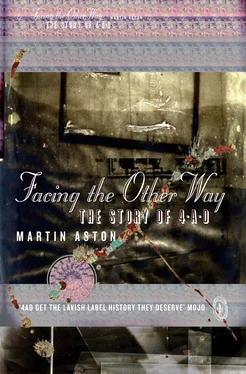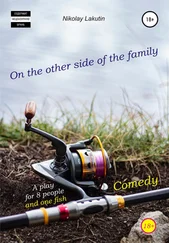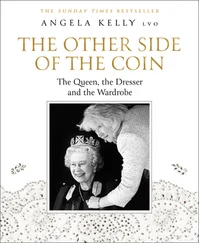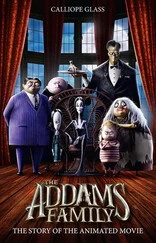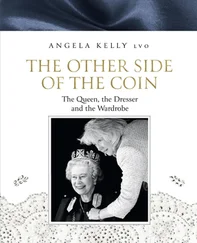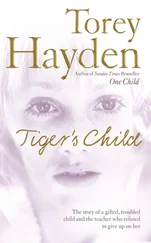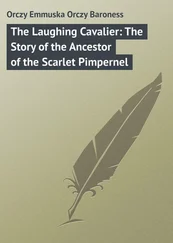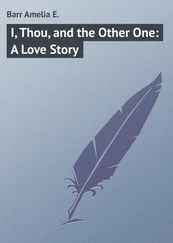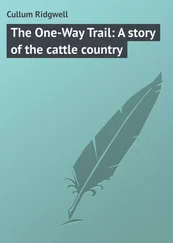Factory’s first release, A Factory Sampler , had featured four bands, including Joy Division and Sheffield’s electronic pioneers Cabaret Voltaire. Axis’ first quartet, simultaneously released on the first business day of 1980, wasn’t quite as hefty. Nor did it include Brian Brain, which would have instantly given the label a newsworthy angle, or another mooted suggestion, Temporary Title, a south London band that used to rehearse in Beggars’ Fulham basement, whose singer Lea Anderson was a ‘floating’ Saturday shop assistant across the various Beggars Banquet shops. Instead, out of the pile of demos emerged three unknown entities, The Fast Set, Shox and Bearz, and one band that had released a single on east London independent Small Wonder: Bauhaus, who was to save Axis from the most underwhelming beginning.
The single given the honour of catalogue number AXIS 1 was The Fast Set’s ‘Junction One’. London-based keyboardist David Knight was the proud owner of a VCS3 synth, popularised by Eno, whose demo was played in the Earls Court shop by his friend Brad Day who worked there on Saturdays. ‘Peter Kent said if I wanted to record an electronic version of a glam rock track, he’d release it on this new label,’ recalls Knight. ‘The Human League had covered Gary Glitter’s “Rock And Roll”, and there were lots of other post-modern, semi-ironic interpretations around. I knew T. Rex’s “Children Of The Revolution” had only two chords, which suited me. Peter put me in a studio to record it, but he needed another track, which I knocked out on the spot, which became the A-side. I don’t know why.’
At very short notice, Knight and three cohorts played a show at Kent’s request. Budding film director John Maybury (best known for his 1998 Francis Bacon biopic Love Is the Devil ) projected super-8 images on to them and named them The Fast Set, because the quartet were so immobile on stage. Maybury also designed the cover of ‘Junction One’. The Fast Set’s synth-pop had a bit of early Human League’s sketchy pop but not its vision or charm. ‘For starters, I was no singer,’ says Knight. ‘My vocals were appalling!’
AXIS 2 and AXIS 4 were demos that had been posted to the Hogarth Road shop. ‘She’s My Girl’ was by Bearz, a quartet from the south-west of England that wasn’t even a band, says bassist Dave Gunstone. ‘The singer John Goddard and I had an idea to make a record – we liked the new wave sound, but we didn’t even have songs before we booked the studio. We found a drummer, Mark Willis, and David Lord produced us and played keyboards. I was a signwriter for shops and vans then – and you can hear I’m not a musician. But Ivo called to say he was interested in signing us. We went up to see him and Peter – to be in the office with Gary Numan gold discs on the walls, it was dream come true.’
They called themselves The Bears until Ivo (who says it would have been Peter Kent) pointed out other bands had already used the name, ‘so he said “stick a z on the end”,’ says Gunstone. ‘Neo-psychedelic vocals over an attractively lumpy melody’ ( NME ) and ‘nostalgia pop’ (Peter Kent) are fair appraisals of the song, given the dinky Sixties beat-pop and Seventies bubblegum mix, while the B-side ‘Girls Will Do’ was tauter new wave.
Shox were also hopeful of a stab at success via the new wave conceit of a misspelt name – though the photo on the cover of vocalist Jacqui Brookes and instrumentalists John Pethers and Mike Atkinson in one bed was horribly old school. The most prominent British weekly music paper, New Music Express ( NME ) also approved of ‘No Turning Back’: ‘Fresh and naturally home-made, like The Human League once upon a time’. Peter Kent’s comment, ‘I have no memory of it whatsoever’, also hits the mark.
AXIS 3, ‘Dark Entries’, was an altogether different story. Peter Kent recalls being in the Rough Trade shop. ‘I was buying singles for Beggars Banquet, and Geoff Travis was there, playing some demos. I heard him say he didn’t like it, and I said, “Excuse me?” Geoff said I could take it. The energy was unbelievable, and the sound was so different from everything else around. Forty-eight hours later, I was in Northampton to meet Bauhaus.’
Ivo: ‘If Peter did go to Northampton, that was another thing that he didn’t tell me! I first met Bauhaus in the Earls Court shop where Peter had intercepted the tape they were intending to deliver to Beggars Banquet. Peter came to find me in the restaurant over the road and insisted I come back immediately to listen to it and meet the band.’
According to Bauhaus’ singer Peter Murphy, ‘Peter said, “I’m having you lot”. Ivo didn’t want us. That’s what Peter said at the time. Ivo’s a mardy bugger! And really sarcastic [laughs]. But when we walked into the Beggars office, Ivy [Murphy’s affectionate nickname for Ivo] was working there, and he looked at us after hearing the music and said yes!’
Via a Skype connection to Turkey’s capital Istanbul, where Murphy has lived since marrying his Turkish wife and following the Islamic belief of Sufism, the former Bauhaus singer still looks sleek and gaunt, his celebrated ‘dark lord’ persona intact. Traffic whirs away in the background, but it cuts out when Murphy puts on ‘Re-Make Re-Model’ from Roxy Music’s epochal 1972 album debut, presumably to set the scene for our conversation, by showcasing Bauhaus’ roots in both glam and art rock.
‘I was fifteen,’ Murphy begins, ‘and I didn’t know if it was male or female, but I saw this pair of testicles peaking out under a Kabuki outfit, and it was the most erotic moment. It felt angelic.’ The photographic object of his affection was David Bowie, in his Ziggy Stardust leotard. Roxy Music’s synthesiser magus Brian Eno, says Murphy, ‘was maybe even more magical, awesome in that raw, lo-fi way, the drums on his solo records so flat and thick and stocky, with none of that fucking reverb bollocks that Ivo would swamp things in!’
The Bauhaus siblings, David and Kevin Haskins, both now live in California – David J, as the bassist calls himself, is in Encinitas, 95 miles from Kevin Haskins Dompe (he’s since bolted on his wife’s maiden name) in Los Angeles. Both willingly testify to a similarly shared epiphany – July 1972, when Bowie – in the guise of Ziggy – sang ‘Starman’ on Top of the Pops . ‘I was hooked, and I knew I had to do this myself.’
There’s one missing voice – guitarist Daniel Ash. Though he lives in California as well, he hasn’t communicated with any of his former bandmates since the band’s 2008 album Go Away White . Ash, the others say, prefers tinkering with his beloved motorbikes over any remembrance of the past. 2
Playing guitar, David J had graduated from his first band, Grab a Shadow, and having encouraged Kevin – still just thirteen – to learn the drums, they’d joined Jam, a hard rock covers band. ‘And then punk happened,’ says Haskins Dompe. ‘David took me to The 100 Club to see the Sex Pistols, The Clash and the Banshees. The next day I cut off my hair and wore my paint-splashed polyester pyjamas to art school.’
After the demise of the pair’s short-lived punk band The Submerged Tenth, David J had bumped into fellow art school student Ash, who he’d known since kindergarten. ‘We clearly had a connection,’ says David. ‘We both loved dub reggae, and Bowie.’ Haskins and Ash subsequently formed The Craze, which, Haskins Dompe says, ‘played new wave power-pop, which Daniel didn’t like, so that ended’. Ash asked Haskins Dompe to join a new band fronted by Ash’s old school friend Peter Murphy, but excluding David J. ‘Daniel felt David’s ideas were too strong, but he relented,’ says Haskins Dompe. ‘I could see the chemistry between them.’
Читать дальше
